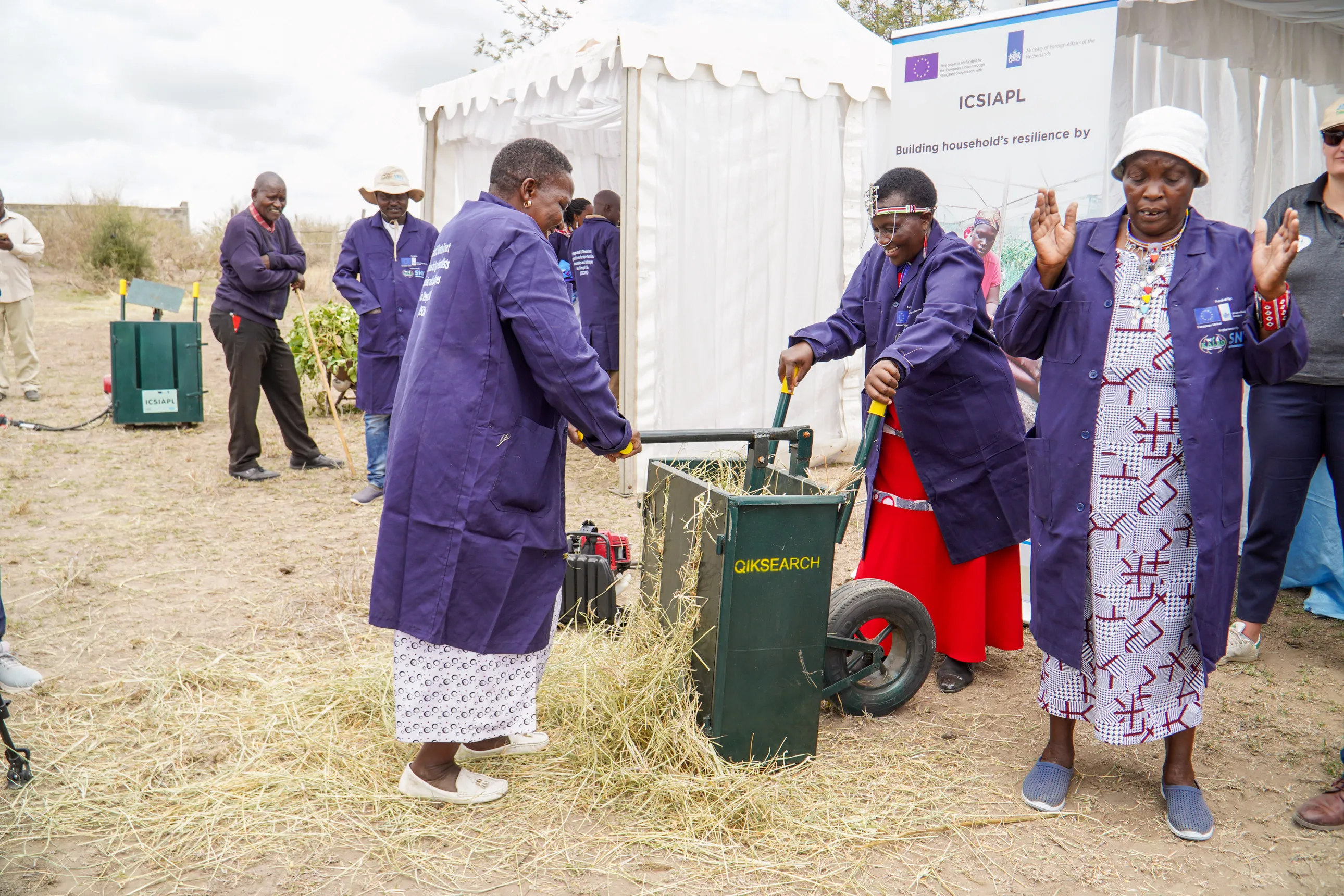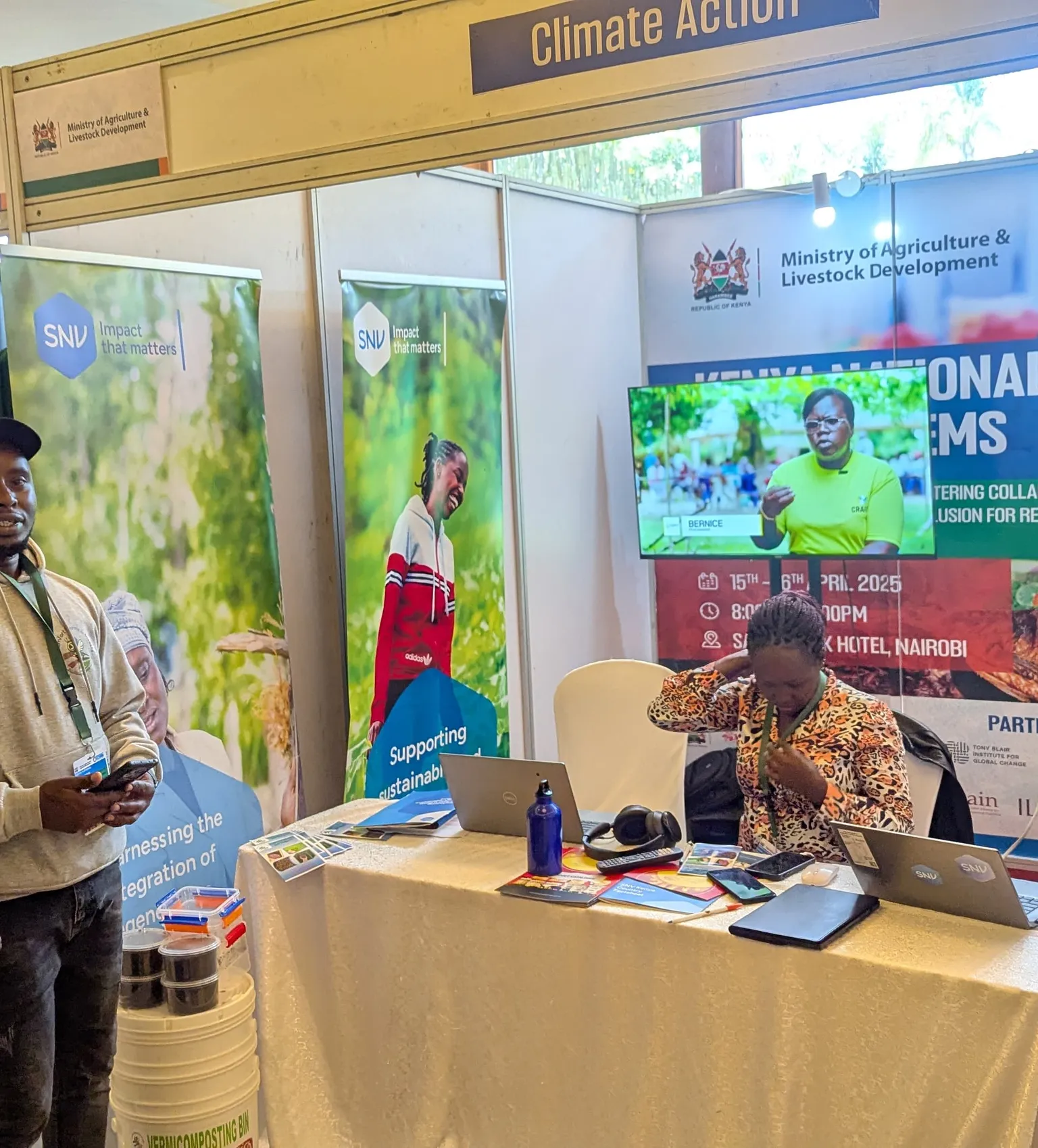ICSIAPL
Kenya,
ongoing

The Integrated & Climate Smart Innovation for Agropastoralist Economies and Landscapes (ICSIAPL) in Kenya’s ASALs focuses on the livelihoods of agro-pastoralist communities through improved forage production and livestock husbandry.
The European Union, through its first delegated cooperation with the Netherlands Ministry of Foreign Affairs (DGIS), provided funding to SNV and the Kenya Agricultural and Livestock Research Organisation (KALRO) to implement the three-year Improved Forage for ASAL Landscapes project in Kenya in the counties of Taita Taveta, Kajiado & Narok. The project aims to enhance the livelihoods of agro-pastoralist communities through improved forage production and livestock husbandry while building on the commercialisation of climate-smart innovations and sustainable landscape management.
Agriculture contributes 26% to Kenya’s Gross Domestic Product (GDP). In Arid and Semi-Arid Lands (ASALs), livestock is the main contributor to the agricultural sector. About 90% of family income and employment in these areas comes from livestock, but the sector faces multiple challenges. The land is often overgrazed and overstocked, and human population growth causes competition for land use between crop production and livestock and agriculture and wildlife. Soil fertility is declining, and climate change - including prolonged droughts and flooding - poses threats to vulnerable populations and herds. Farmers use extensive farming systems, and the inadequate supply of certified forage seeds and vegetative planting materials, low forage management skills and low commercialization of forage production leave much potential for improvement.
Focus of the project:
To address these challenges, SNV partnered with KALRO to implement this project whose main objective is to enhance the livelihoods of agro-pastoralist communities through improved forage production and livestock husbandry, building on the commercialisation of climate-smart innovations and sustainable landscape management in the three counties.
To achieve this goal, the project takes a holistic approach focusing on three interlinked outcomes or pathways to ensure long-term change.
The project will engage farmers, agro-pastoralists, youth, women, private sector, Small and Medium Enterprises (SMEs), self-help groups, Community Based Organisations (CBOs), ranches, conservancies, cooperatives, and County Governments to achieve its results. The project will pay special attention to the role of youth and women and their meaningful engagement.
Objectives:
Research applied and commercialised through: increased resilience of agro-pastoralists and SMEs against climate shocks by the adoption of improved forage seed technologies and upscaling of appropriate grazing and feeding innovations.
Capacities strengthened, and coordination realised through: Increased capacity of county governments to implement climate resilient integrated landscape management strategies and plans to support agro-pastoralist communities.
Policies applied, and strategies developed through: Improved capacity of county governments to develop local strategies for drought resilient livestock sector and landscape development compliant with national policies.
Expected results:
10,000 agro-pastoralists households progressively realize a living income through improved production and marketing of animal feed and fodder and become more resilient to climate shocks by applying drought resilient practices.
150 SMEs apply new technologies that enable them to provide affordable livestock relevant products and services to ASAL communities and livestock keepers.
3 county governments include validated livestock climate research results and innovations in improving county policies, and collaborate in joint interventions to promote and enable a landscape approach to natural resource management, infrastructure development and commercial opportunities in Climate Smart Agriculture (CSA).
The agro-pastoralists and SMEs have better access to forages, fodder seeds and vegetative materials, as necessary value chain inputs.
Women and youth of the communities are benefiting through improved skills, access to finance, business opportunities and increased social capital and adaptive capacity.





